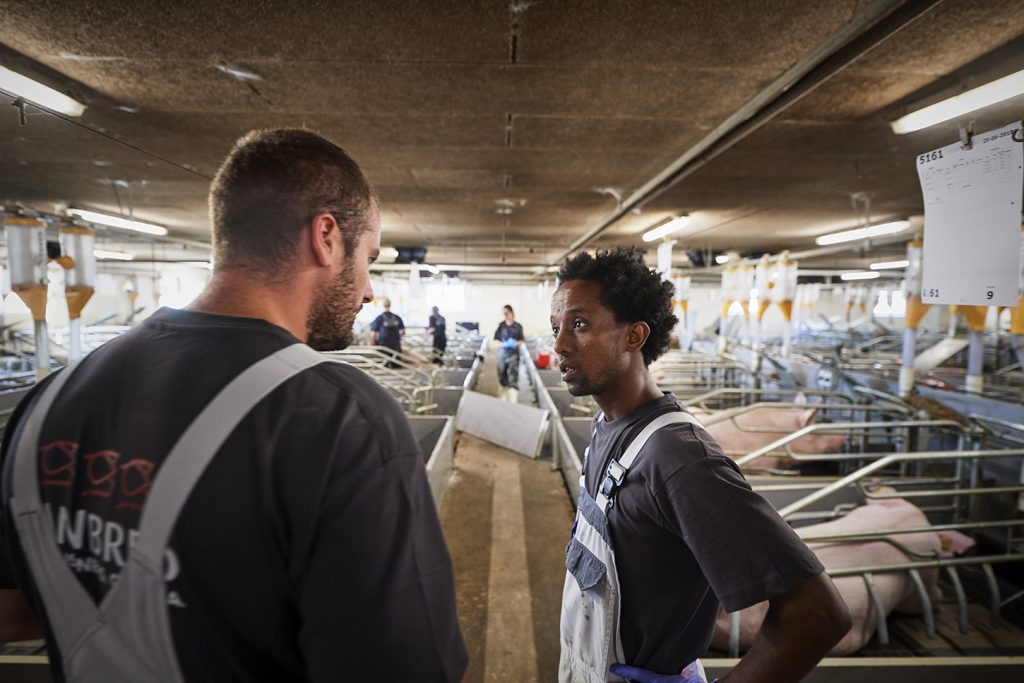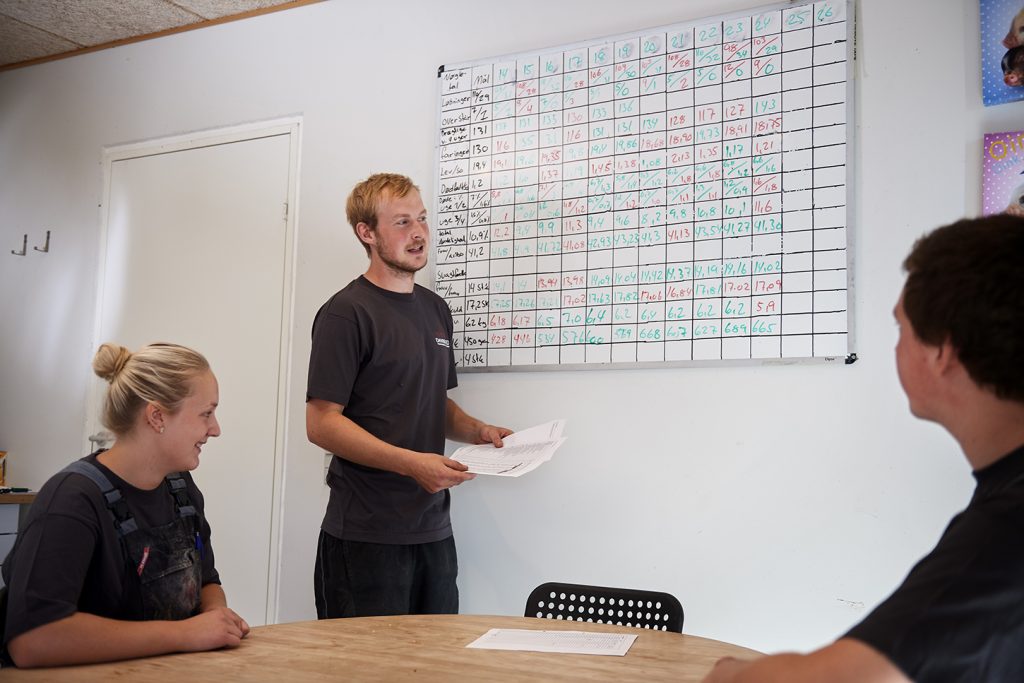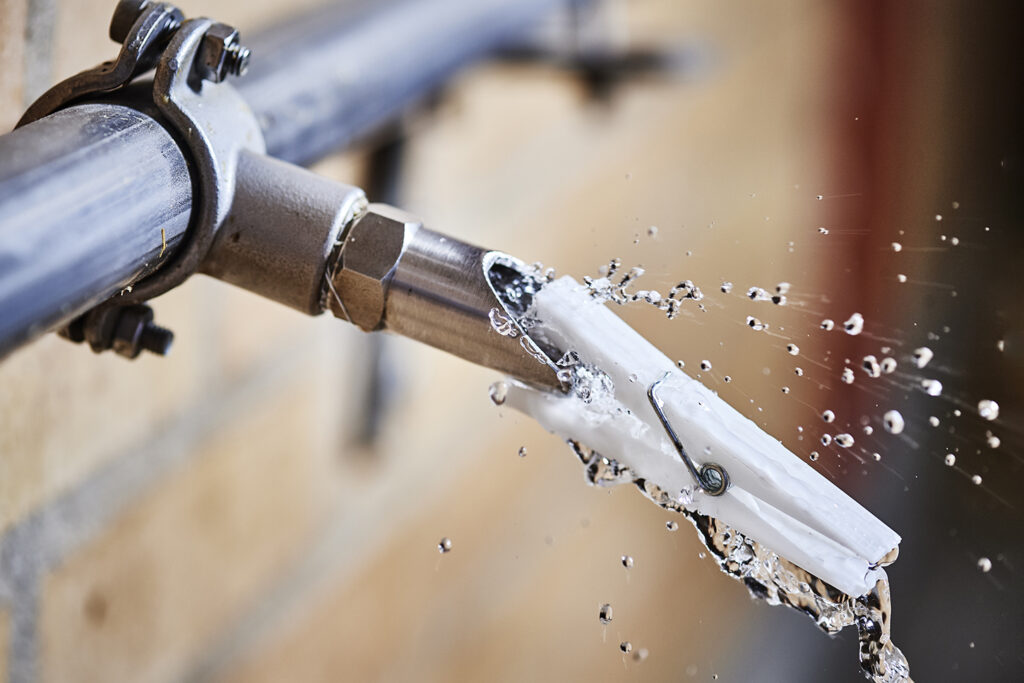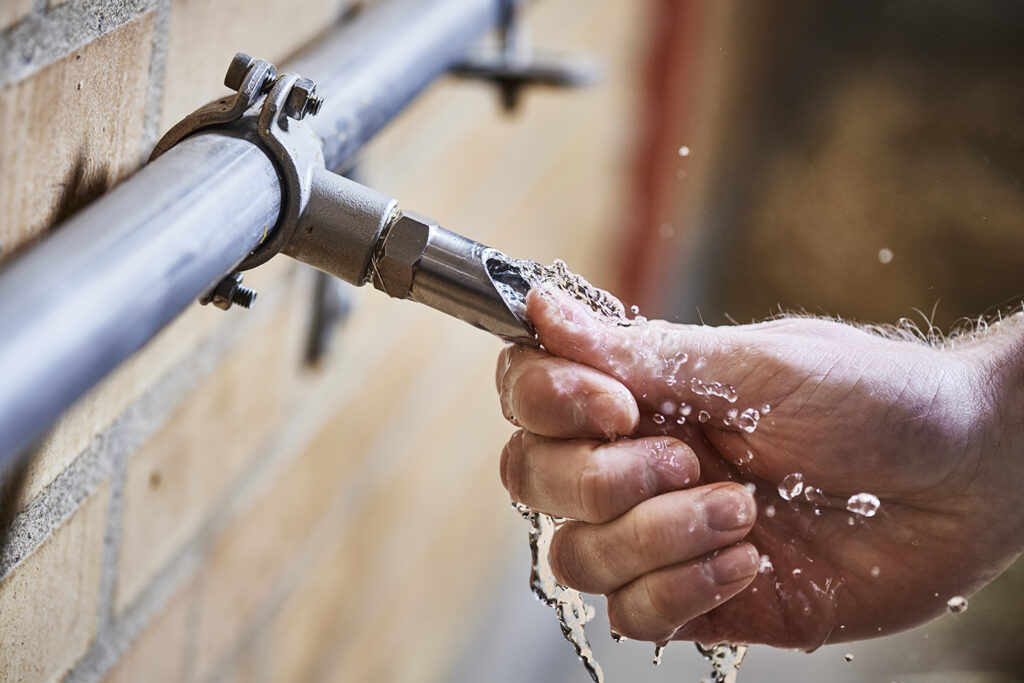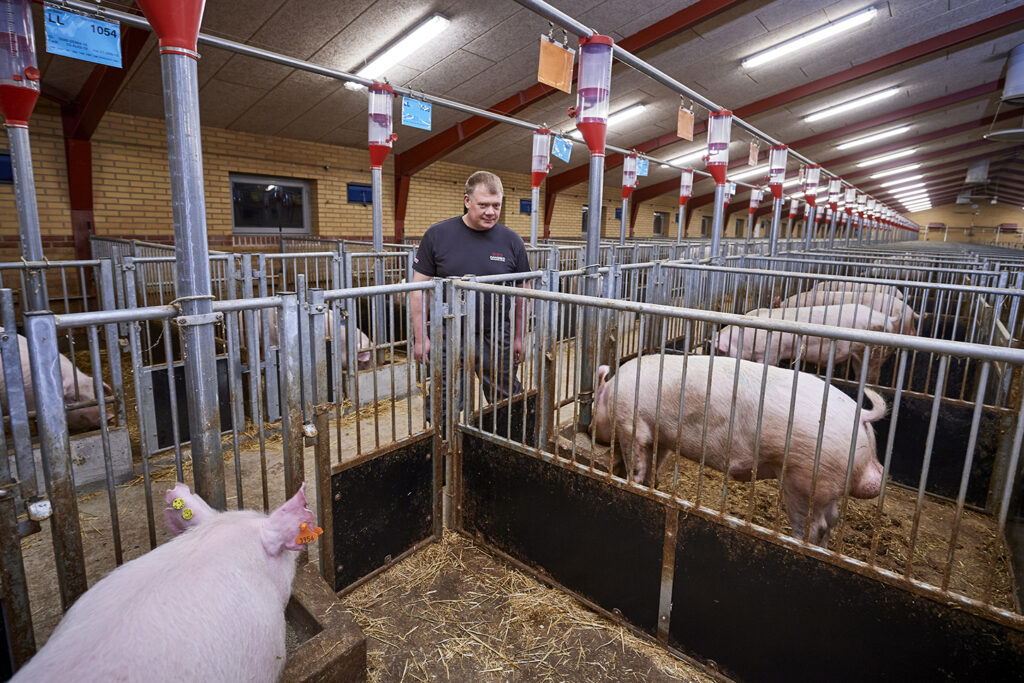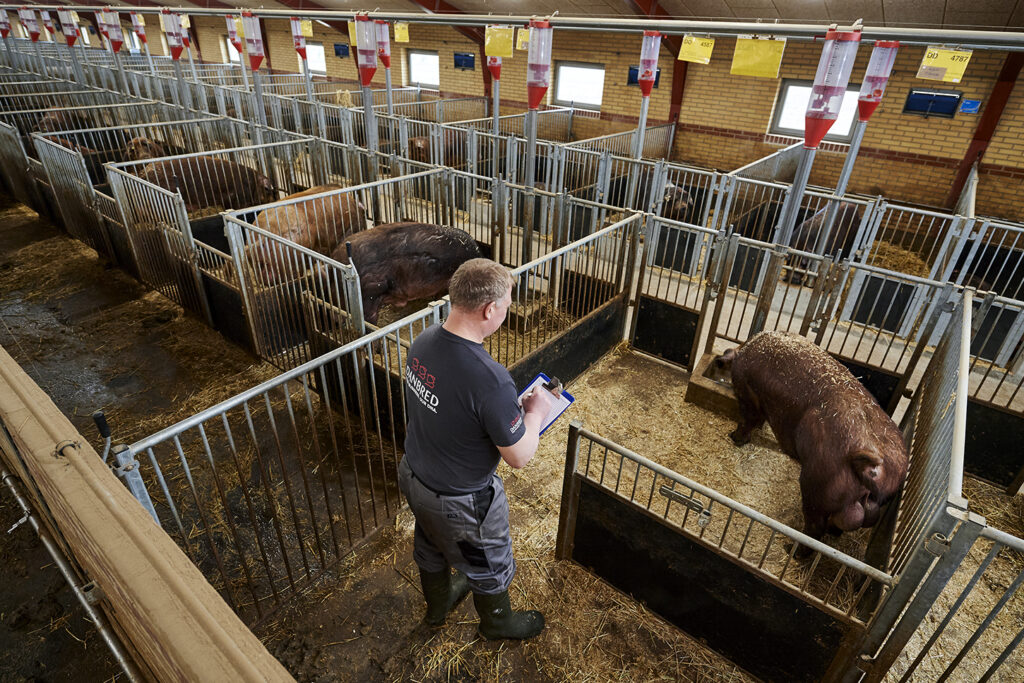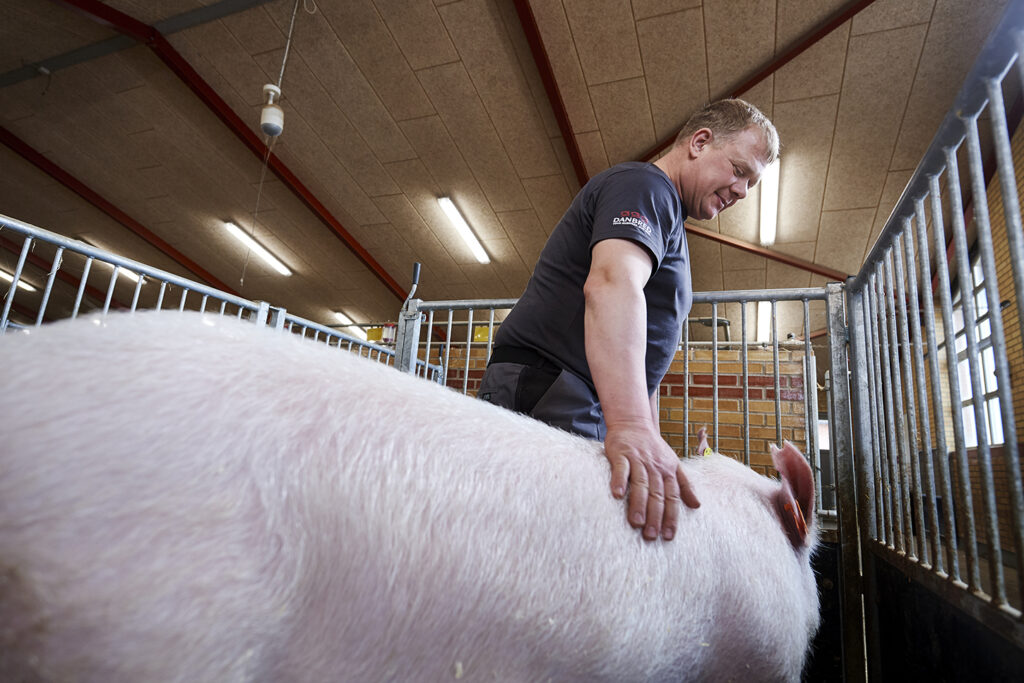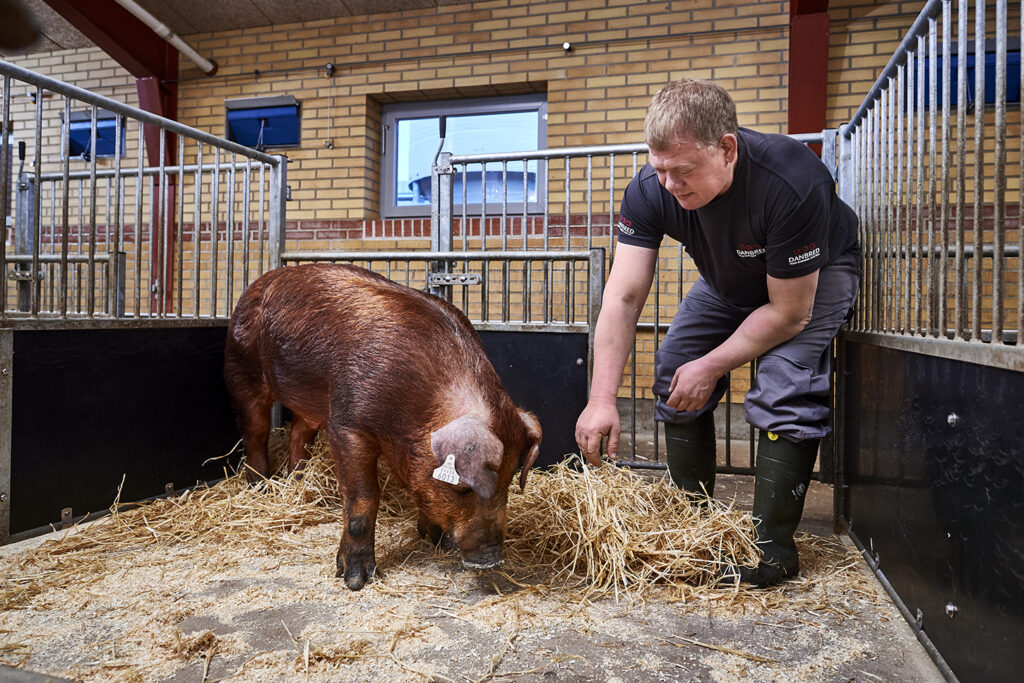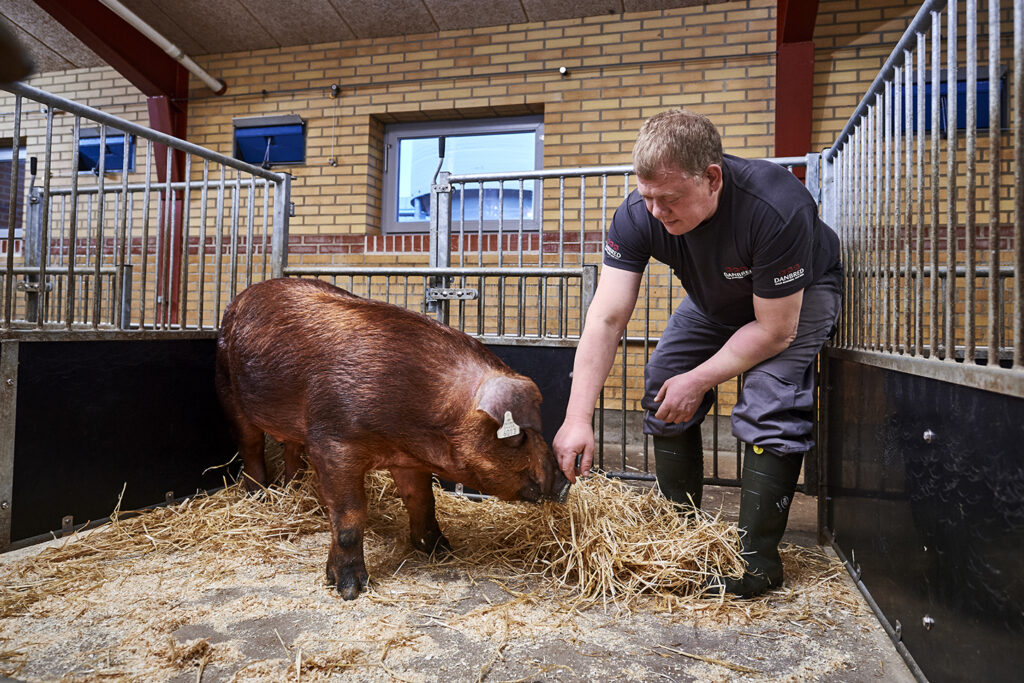Quarantine
We recommend placing all new DanBred boars in an external quarantine facility for at least eight weeks before introducing them to an existing herd (12 weeks in the case of PRRS). This quarantine period is important for giving you time to:
- Detect any unwanted diseases.
- Administer all necessary vaccinations.
The quarantine period lays the foundation for ensuring that new DanBred boars have a long, productive life, so make sure the unit is well managed and the animals get all the attention they need. The quarantine must be securely separated from the existing herd – and employees must also be separated. All management should follow an all-in-all-out flow.
|
|
|
With good housing, feeding and management, the boars’ gastric health, weight and leg condition will be optimal when the time comes for training and semen production. These parameters have a huge impact on the longevity of each boar and its ability to produce semen of good quality.
Preparation of the quarantine unit – cleaning procedure
Before the boars arrive, make sure the quarantine unit has been washed, disinfected and dried. This is essential for the health of the new boars.
- Make sure the slurry pits are empty
- Soak all surfaces, including walls, floors and fixed equipment. Let them soak for 12 to 24 hours
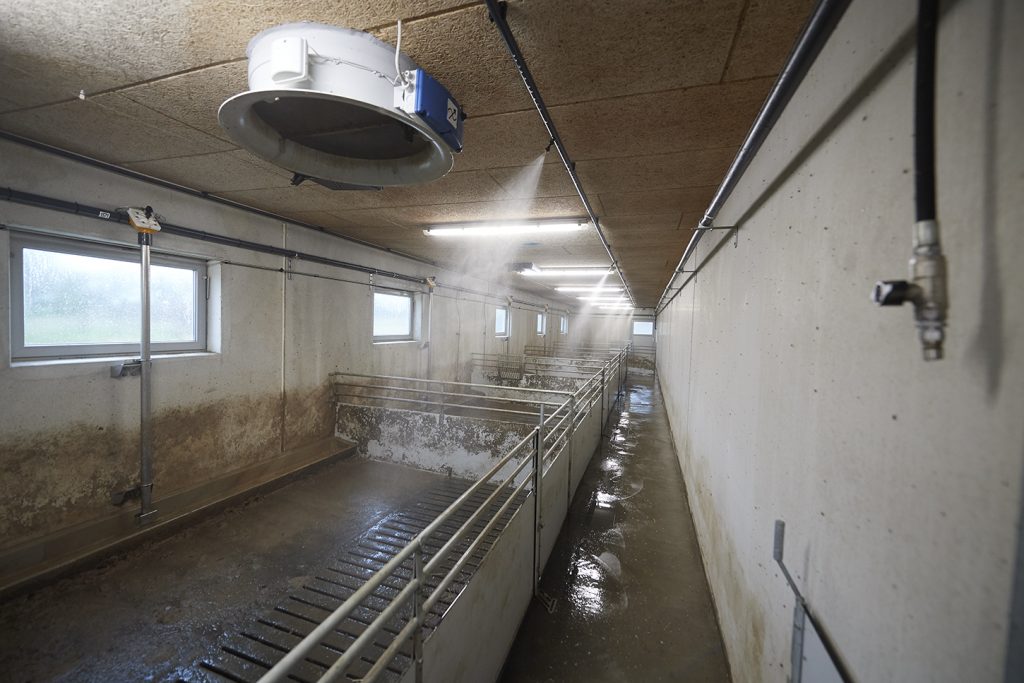
- High-pressure wash all surfaces with clean water, making sure everything is visibly clean
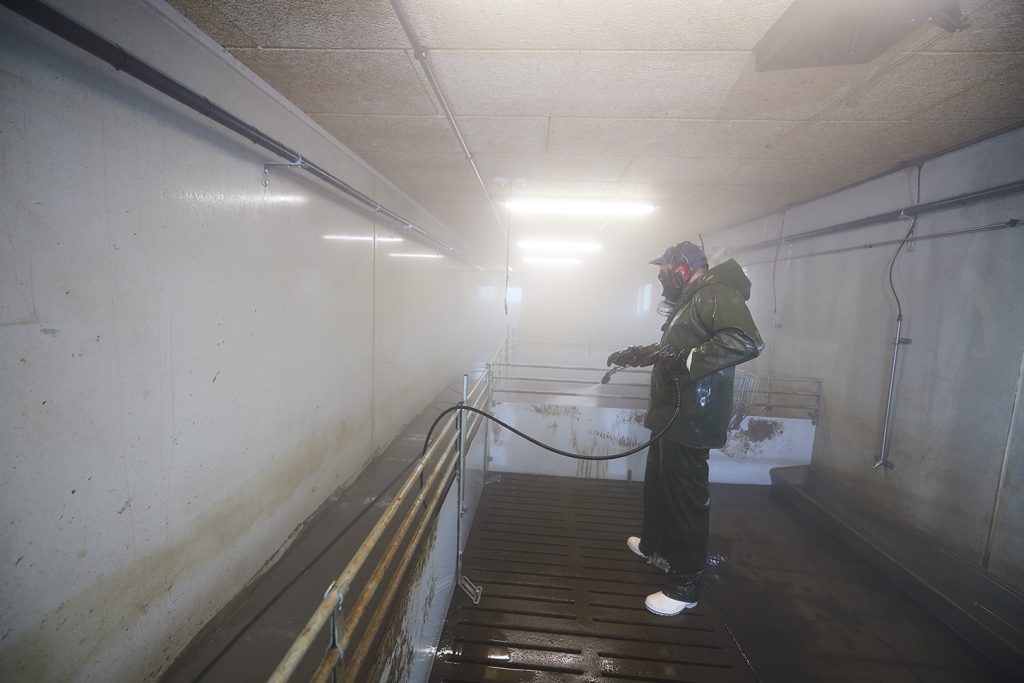
- Wash all surfaces with soap on the same day as high-pressure washing with water
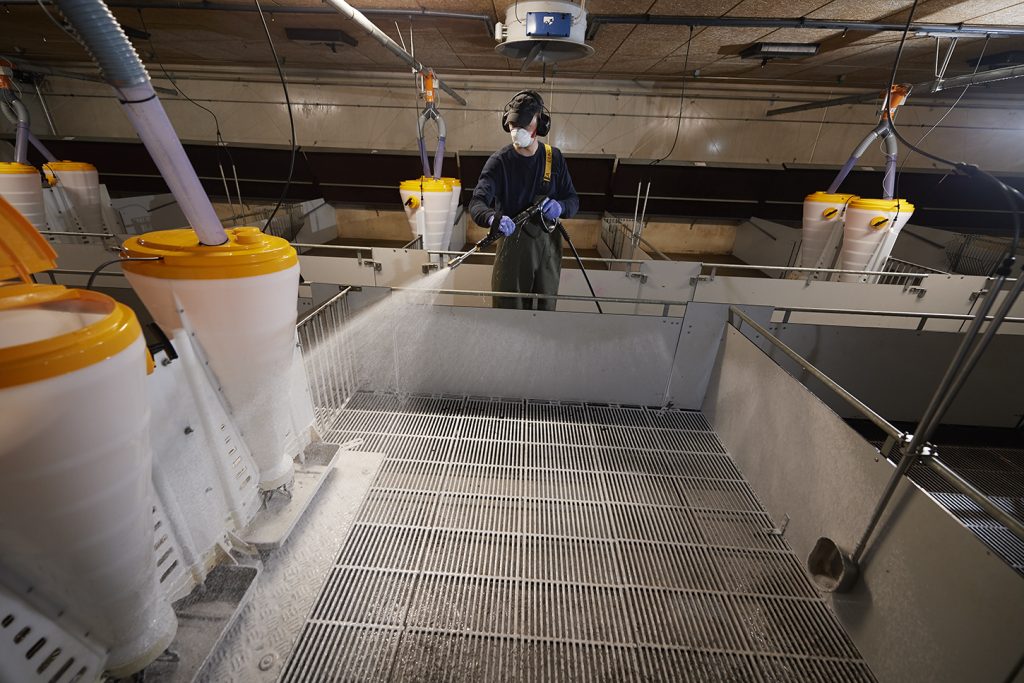
- Rinse everything with low-pressure water on the same day as washing it with soap
- Disinfect all surfaces on the same day as rinsing
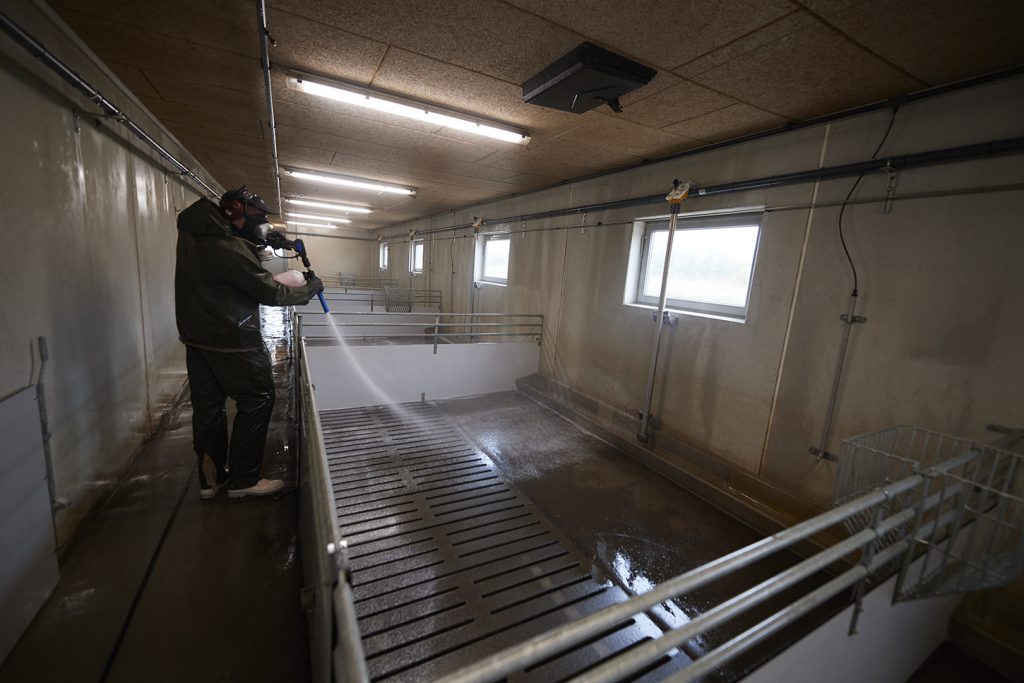
- All surfaces and areas must be dry before the new animals arrive. The ambient temperature should be at least 20°C so you might have to add heating.
|
|
|
- Now the quarantine unit is ready for the arrival of your new DanBred boars
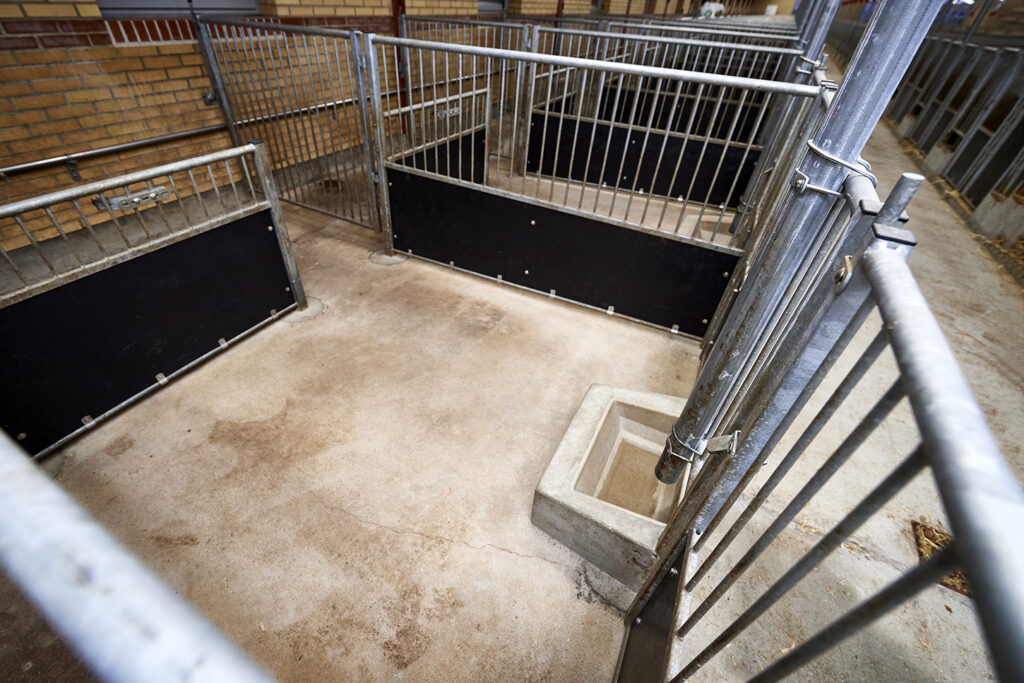
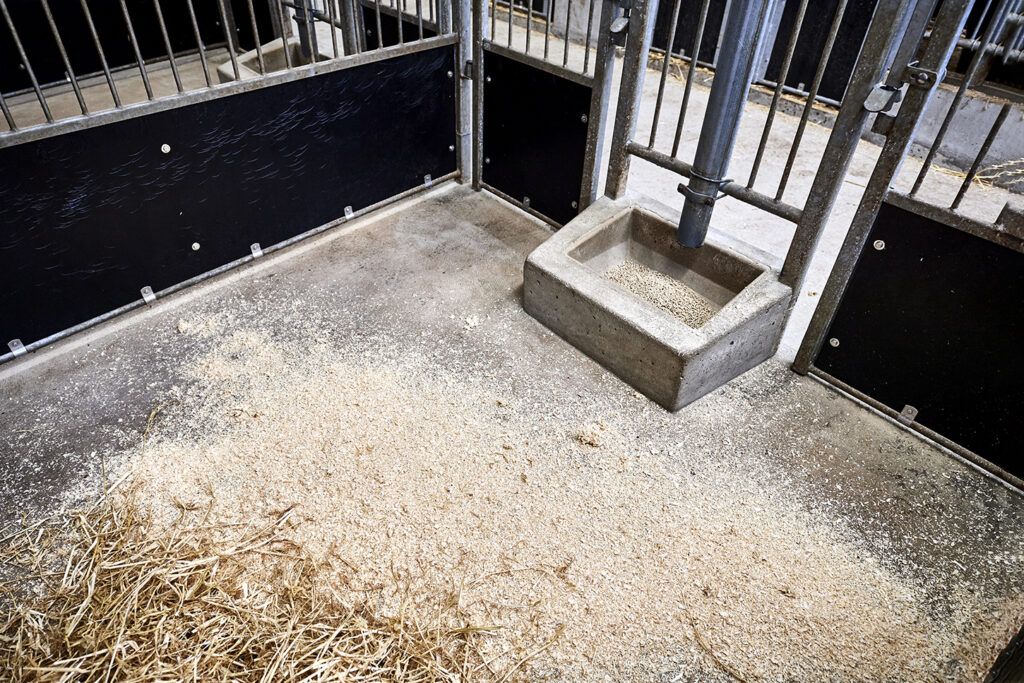
Disinfection of the water system
It is extremely important to disinfect the water system to remove any biofilm from the water pipes, as biofilm could be teeming with infectious bacteria. Rinse the water system twice with an approved disinfectant followed by at least one full-system rinse with clean water:
- Carry out the first rinse after washing the surface of the water nipples or drinkers
- Complete the second rinse the day before the animals arrive – and not before
- Let the cleaning product soak in for about 5 hours
- Make sure the water system is rinsed with clean water at least once before the animals arrive
|
|
|
Arrival – entry and quality control
It is important to make sure the new DanBred boars get a good start.
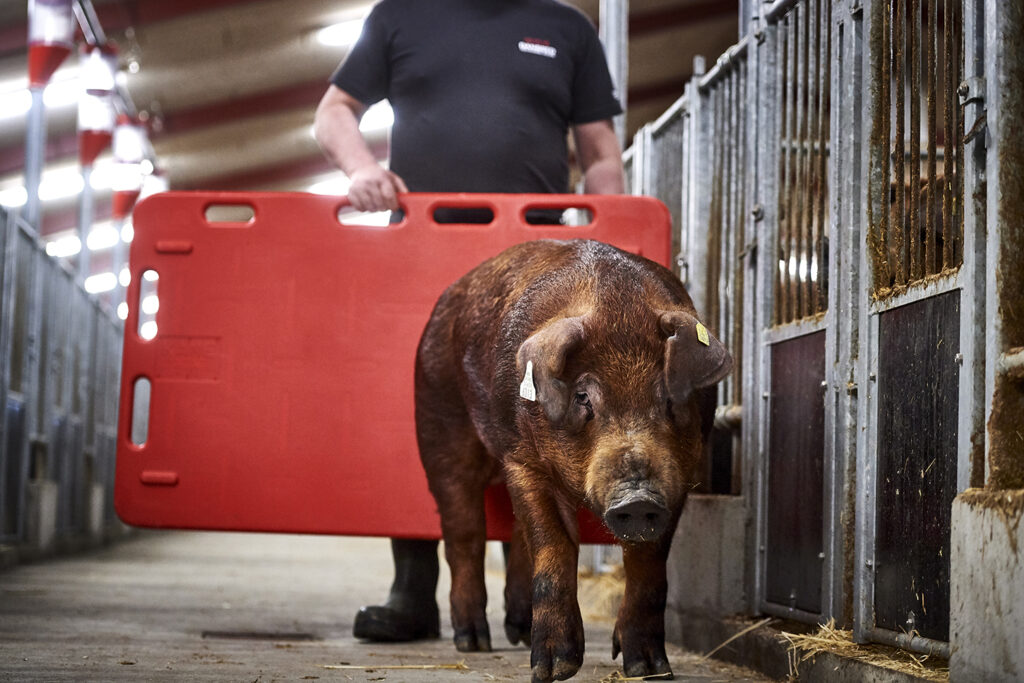
- Check the delivery notes thoroughly to make sure the DanBred boars delivered match your order.
 |
 |
- Check which vaccinations have already been administered by the supplier
- Make sure you keep boars of the same age and from the same herd together
- Make sure all the boars get fresh water and feed as soon as they arrive
 |
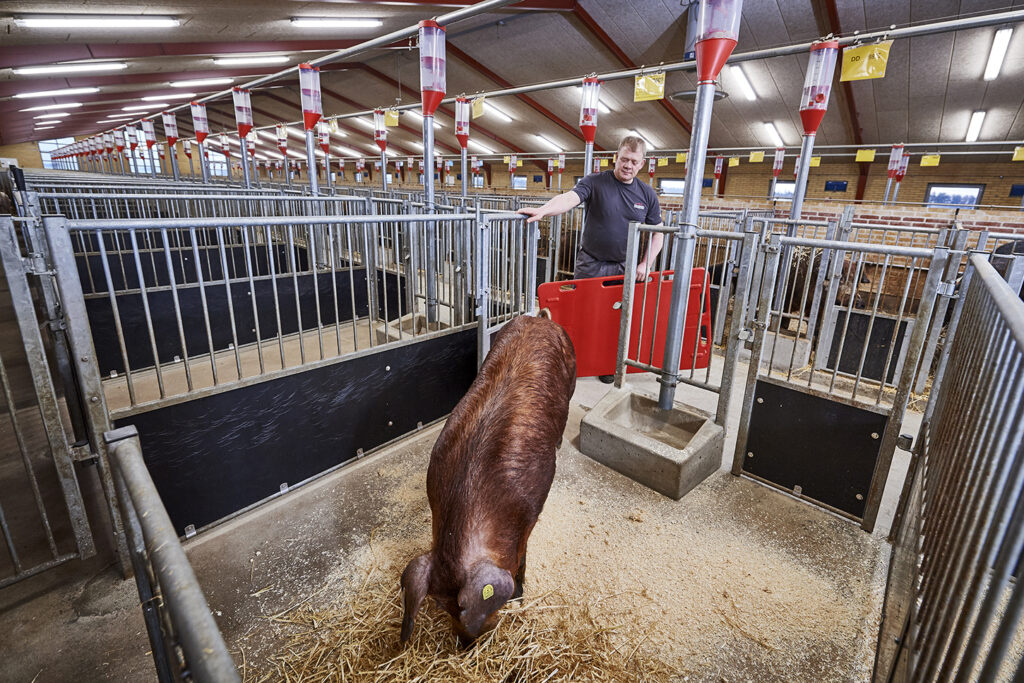 |
-
Check all animals for signs of disease or injuries every day
|
|
|
Recommended temperature in the quarantine unit: 15-20 °C
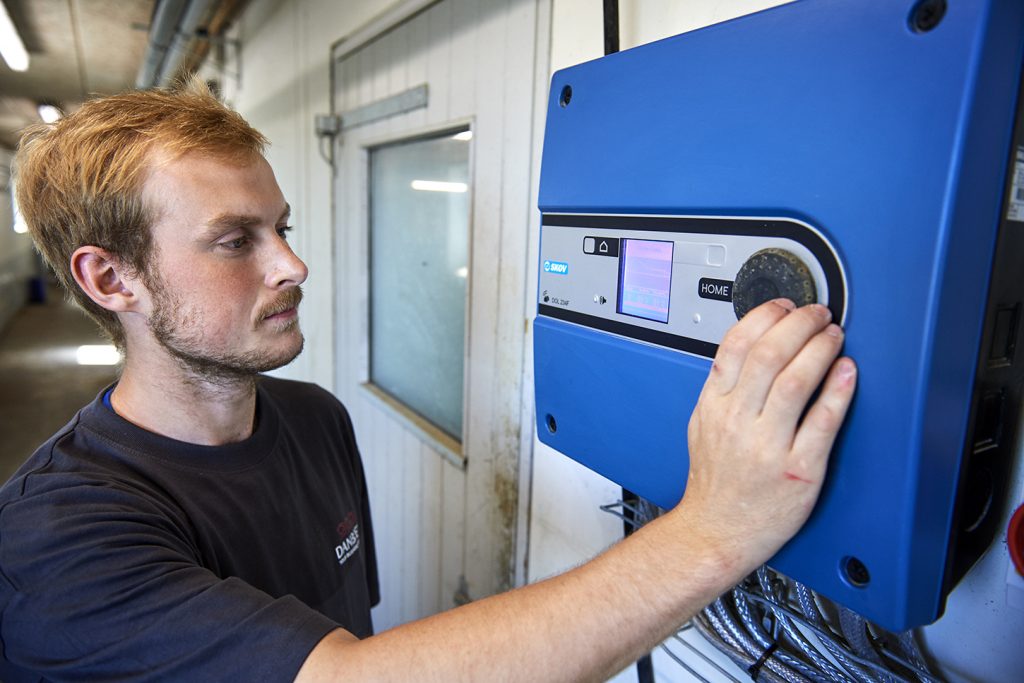
Recommended area per animal:
| Weight | Recommended area per animal | Area per animal cf. Danish legislation |
|---|---|---|
| 50 – 85 kg | 0,75 – 1,00 m² per animal | 0,55 m² per animal |
| 85 – 110 kg | 0,75 – 1,00 m² per animal | 0,65 m² per animal |
| 110+ kg | 1,50 – 1,90 m² per animal | 1,00 m² per animal |
Everyday tasks during the quarantine period
The new DanBred boars contribute to 50 percent of the future genetic levels within the sow herd, why conditions in the quarantine unit should be top priority. Make sure to allocate experienced, qualified employees to take care of the quarantine unit. But do not let anyone who has been in the quarantine unit go into any of the existing production herds.
Ongoing tasks
- Inspect all boars at least once a day for any signs of disease

- Once a week, check growth progress and calculate the daily gain of boars in each age group
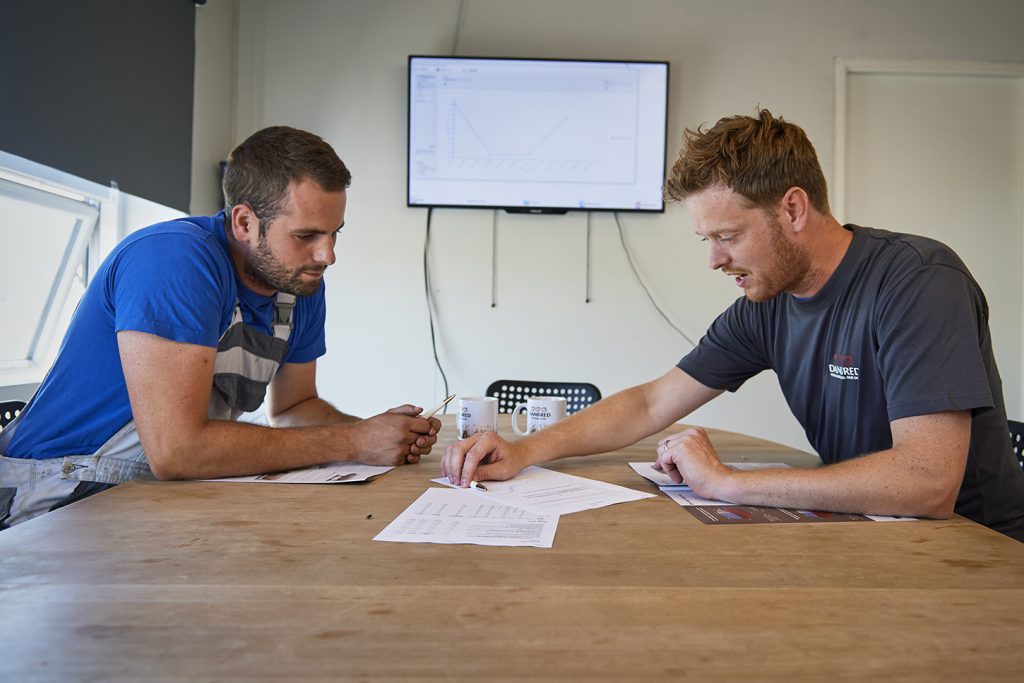
- Plan vaccination and immunisation according to the boars’ age together with the herd veterinarian. Be aware of vaccinations which were already given before delivery
- Plan blood sampling to match the boars’ health in quarantine with that of the existing herd
When checking the boars always enter each pen, so the boars are used to human contact and handling.
|
|
|
Handling young boars
Handling and training should always be calm and controlled. Human contact is a very important factor in the development of the boars’ social qualities, so every human interaction should be positive. During daily procedures, try to teach the boars as many routines as possible. When handling the boars, there are a few pointers worth keeping in mind.
Handling and training should always be calm and controlled. Human contact is a very important factor in the development of the boars’ social qualities, so every human interaction should be positive. During daily procedures, try to teach the boars as many routines as possible. When handling the boars, there are a few pointers worth keeping in mind.
- Employees should go through thorough training with boars, and be aware that the management of boars requires extra time.
- Allow the boars to roam the pen calmly and approach you, making sure every interaction with them is positive.
|
|
|
- Act decisively, safely and predictably around the boars.
- Train the boars from a young age – do not let them get away with bad behaviour or learn bad habits such as biting your boots when you enter the pen.
- Put a hand on the boar to calm it down, and train them to recognise your voice or whistle commands. This helps the boars get used to human presence so they are easier to manage during production.
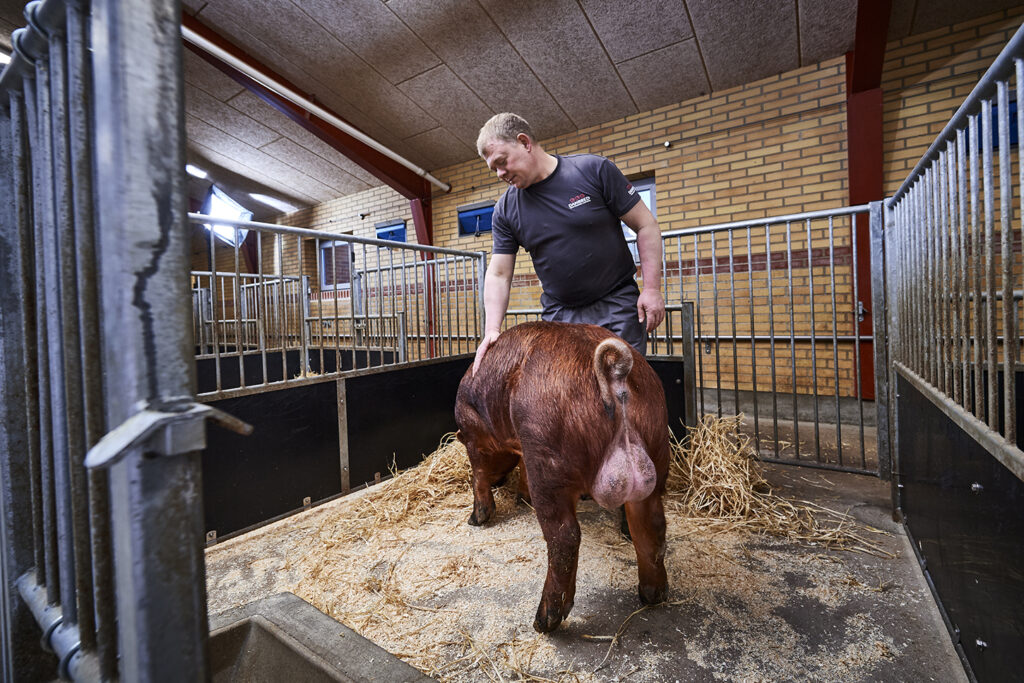 |
 |
VACCINATION PROGRAMME
This vaccination programme is a guide based on a Danish setup. Always work out the vaccination strategy with expert guidance from the herd veterinarian, and always base the strategy on the health status of the herd. The vaccination of boars placed in the sow herd should also follow the same vaccination programme as the sows – with some adjustments.
| Type | Animal | Age 1st vaccination | Age 2nd vaccination | Re-vaccination | Comment |
|---|---|---|---|---|---|
| Glässer’s disease | Boars | At entry to quarantine | 3 weeks after 1st vaccination | ||
| Porcine Parvo Virus – PPV | Boars | 5½ months | 3 weeks after 1st vaccination | Every half year | |
| Erysipelas * | Boars | 5½ months | 3 weeks after 1st vaccination | Every half year | |
| Porcine circovirus type 2 – PCV2** | Boars | 5½ months | Every half year | ||
| PRRS US & PRRS EU *** | Boars | 5½ months | 3 weeks after 1st vaccination | This vaccination assumes that an inactivated/killed vaccine is used | |
| Mycoplasma | Boars | At entry to quarantine | 2 weeks after 1st vaccination | Can be given as One-Shot, depending on the type of vaccine | |
| Influenza | Boars | 3 times per year | |||
| APP | Boars | At entry to quarantine | 2 weeks after 1st vaccination |
* For Erysipelas, consider giving the youngest boars an extra boost during quarantine.
** This is DanBred’s recommendation for the PCV2 vaccination.
*** With activated/live PRRS vaccines, administer them once at the beginning of the boars’ quarantine. The use of live vaccines should be followed by a quarantine of at least 12 weeks.
Feeding young boars
DanBred boars have extraordinary genetic potential for reproductive performance. Paying careful attention to feeding your DanBred boar will be rewarded in the farrowing unit, where the full genetic potential will be released for excellent productivity.
Studies from SEGES Pig Research Centre have shown that a daily gain of 750-800 g/day from 30 kg to 140 kg led to the best possible basis for long-term reproduction and longevity. The table below shows the recommended content of energy, Standardized Ileal Digestible (SID) content as well as content per kg feed for selected nutrients when using restricted feeding.
| Restricted feeding | Boars 30-65 kg | Boars 30-105 kg | Boars 65-105 kg1 | Boars > 105 kg1 |
|---|---|---|---|---|
| Energy density per kg feed | 9.7 MJ NE/
12.6 MJ ME/ 1.06 EW |
9.5 MJ NE/
12.5 MJ ME/ 1.05 EW |
9.5 MJ NE/
12.5 MJ ME/ 1.05 EW |
|
| SID Lysine per kg feed (g) | 6.9 | 6.2 | 5.8 | |
| Total lysin per kg feed (g) | 8.3 | 7.3 | 6.9 | |
| Minimum SID crude protein per kg (g) | 116 | 105 | 100 | |
| Phosphorous per kg (g) | 4.9 | 4.7 | 4.3 | |
| Digestible phosphorus per kg (g) | 2.8 | 2.7 | 2.5 | |
| Calcium per kg (g) | 6.8 | 6.8 | 6.8 | |
1 This is also recommended for the boar unit – before and after the boar is taken into use
*NE = Net energy; ME = Metabolic Energy; EW= Net Energy using the Dutch evaluation system
Consider phase feeding for boars above 105 kg. The average daily gain and lean gain will be too high if using a diet for lactating sows or for boars which weigh 30-105 kg.
For boars between 30 and 105 kg, we recommend using the feed curve shown below. The amount of digestible lysine is particularly important to control lean growth. If the feeding system allows phase feeding, this can efficiently control growth rate, but it is not strictly necessary.

Recommended feeding curve for boars. Feed allowance is shown in kg. The feeding curve is based on feed with a content of 9.5 MJ NE/12.5 MJ ME/1.05 EW per kg of feed. Using one diet from 30-105 kg SID lysine should be 6.2 g per kg equivalent to a total content of lysine at 7.3 g per kg feed.
*NE = Net energy; ME = Metabolic Energy; EW= Net Energy in Dutch evaluation system
DanBred recommends following a restricted feeding curve to control daily gain in the boars.
If ad libitum feeding is your only option, follow the recommendations below for the recommended content of energy, Standardized Ileal Digestible (SID) content as well as content per kg feed for selected nutrients when using ad libitum feeding for boars from 30-105 kg and for boars above 105 kg, respectively.
| Ad libitum feeding | Boars 30-105 kg | Boars >105 kg |
|---|---|---|
| Energy density per kg feed | 9.2-9.5 MJ NE/
12.0-12.5 MJ ME/ 0.97-1.00 EW |
8.7-9.2 MJ NE/
11.5-12.0 MJ ME/ 0.90-1.00 EW |
| SID Lysine per kg feed (g) | 5.8 | 4.1 |
| Total lysin per kg feed (g) | 6.9 | 5.1 |
| Minimum SID crude protein per kg (g) | 100 | 92 |
| Phosphorous per kg (g) | 4.3 | 3.6 |
| Digestible phosphorus per kg (g) | 2.5 | 2.2 |
| Calcium per kg (g) | 6.8 | 6.8 |
*NE = Net energy; ME = Metabolic Energy; EW= Net Energy using the Dutch evaluation system

